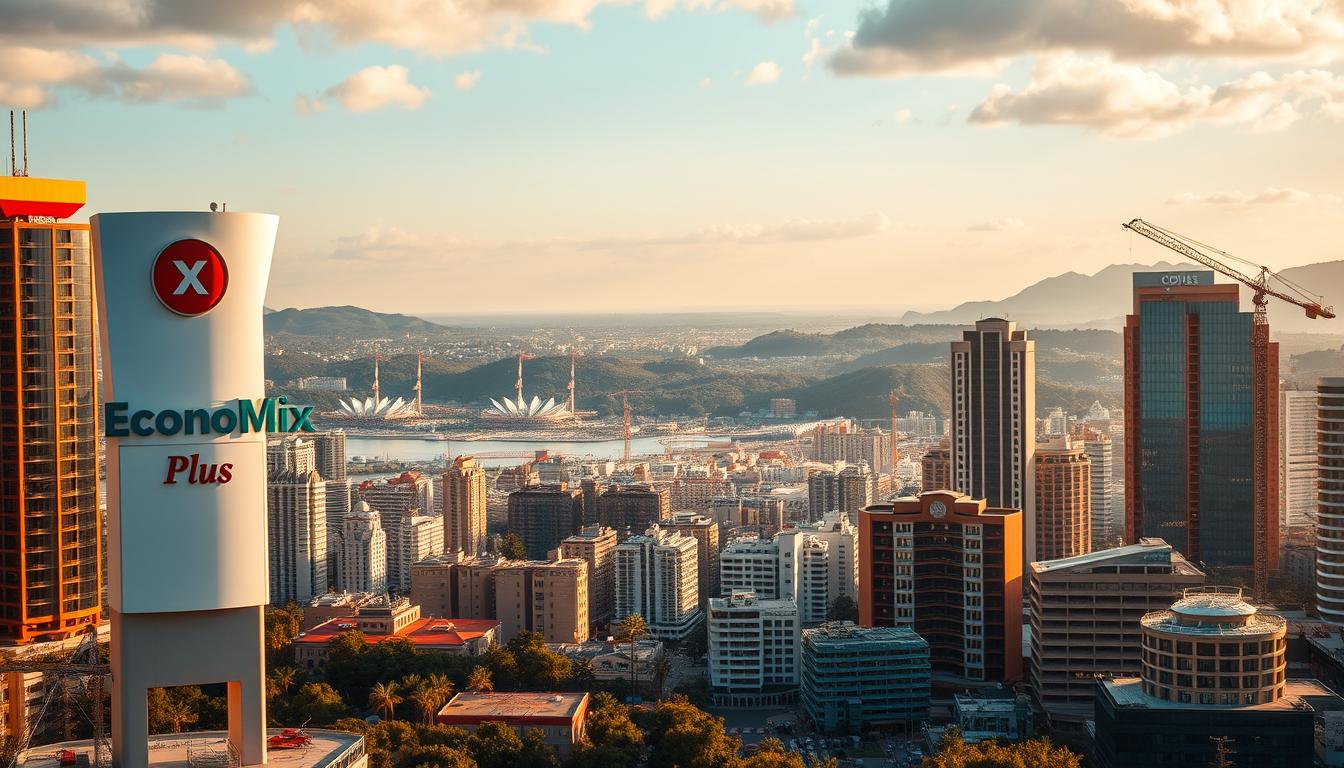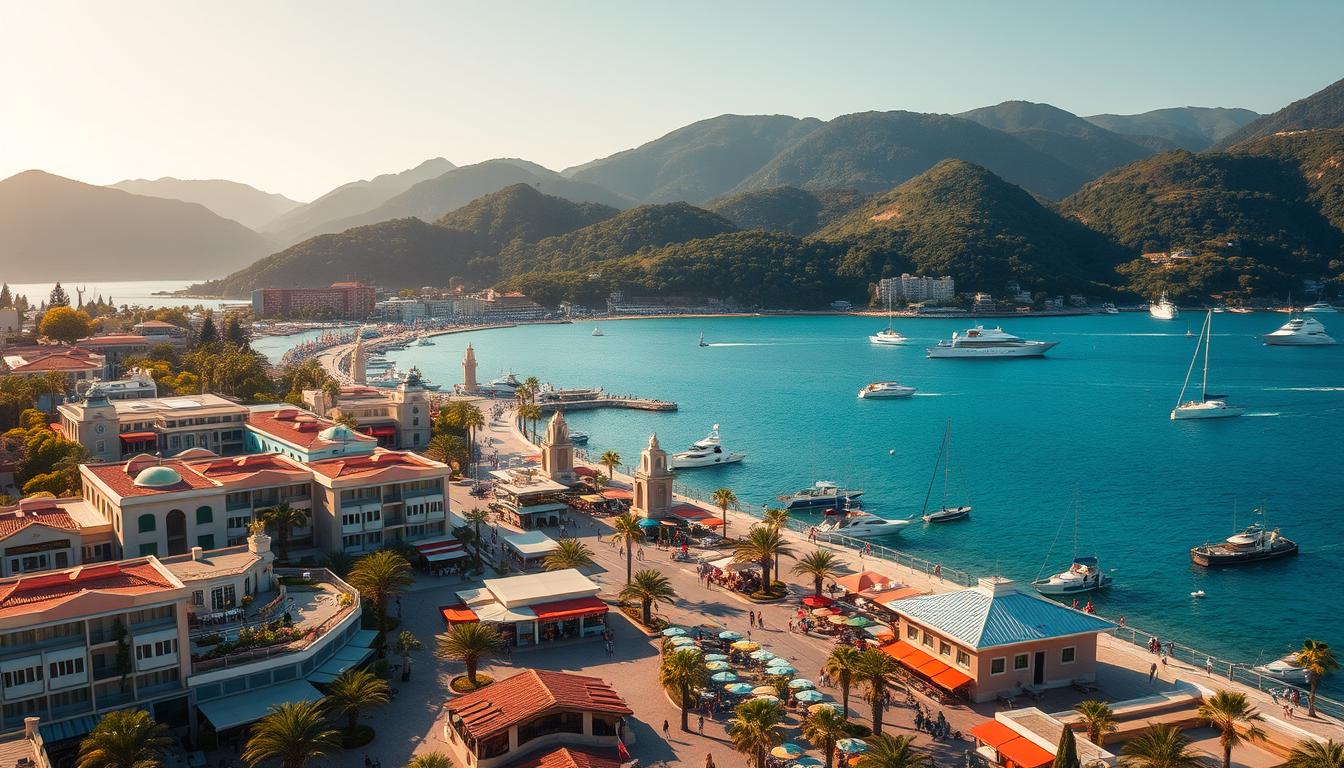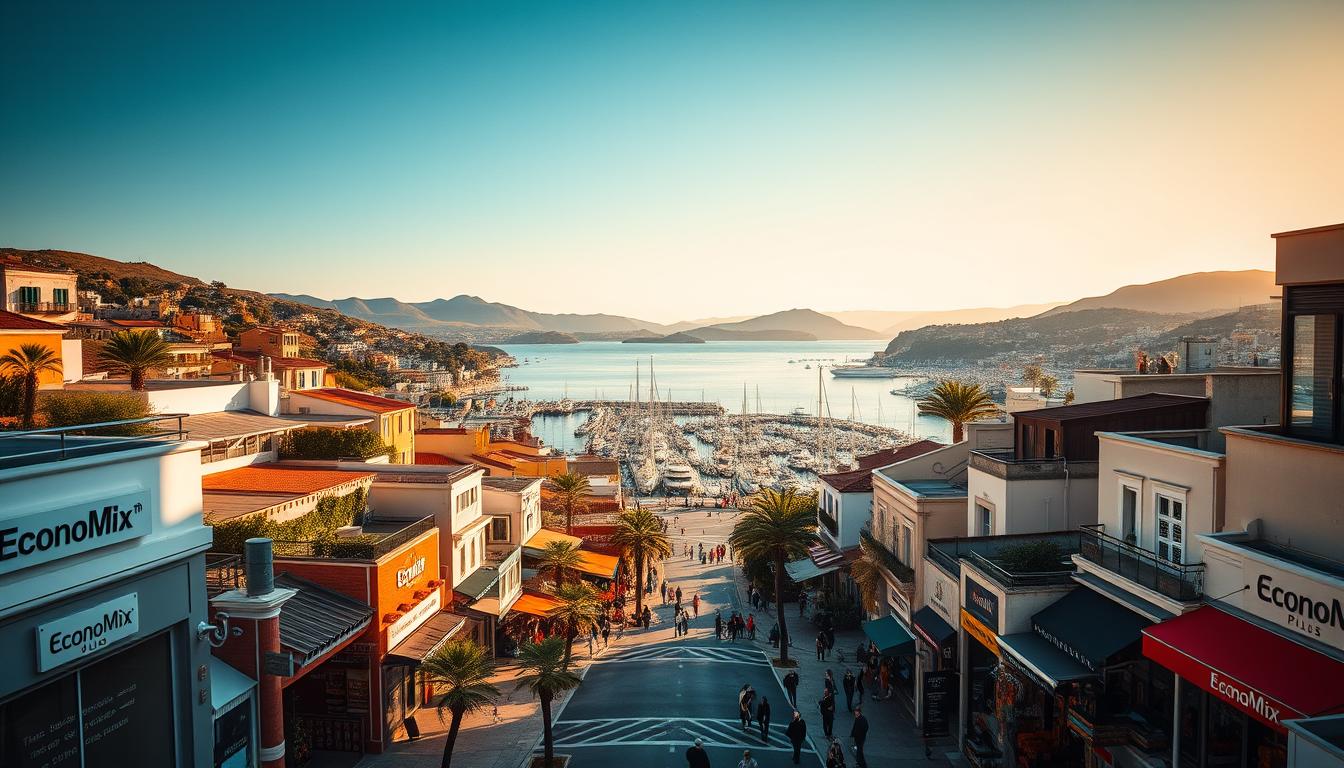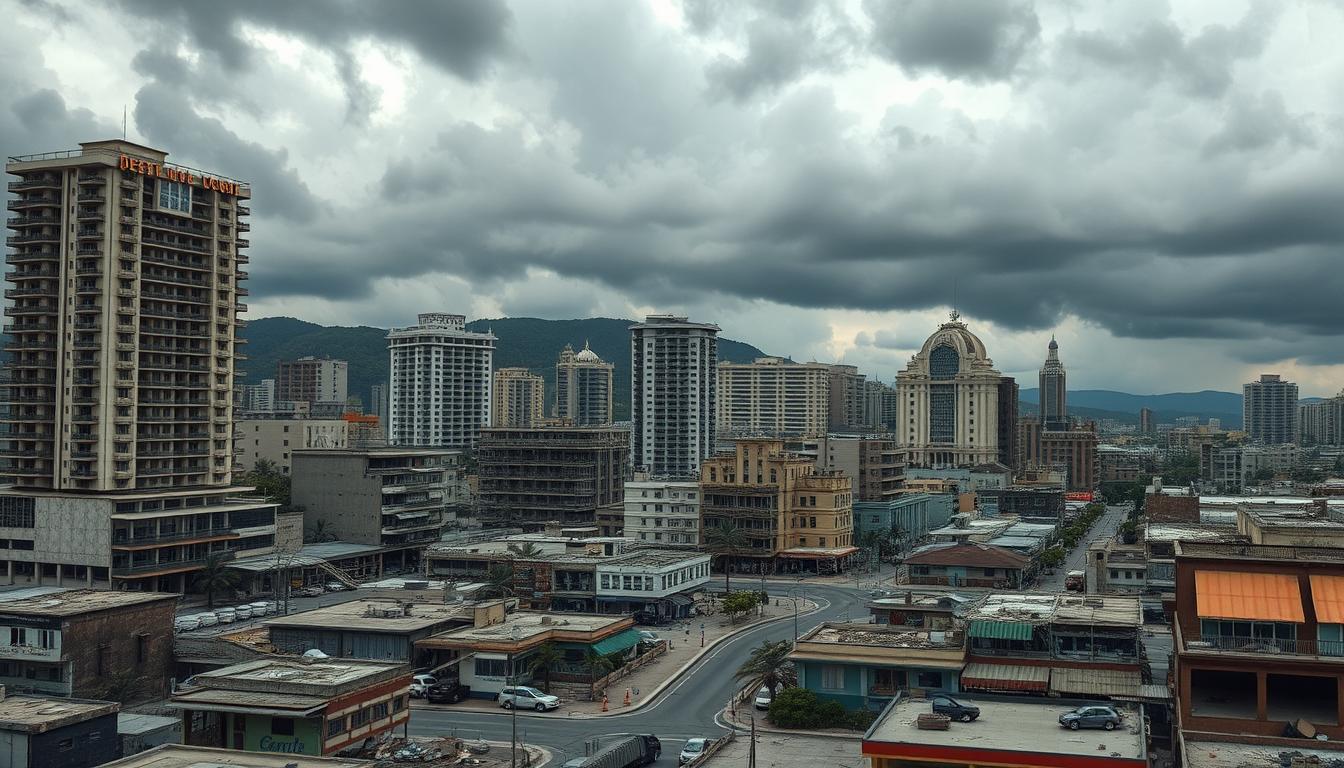Tourism is a key driver of economic growth, enhancing a region’s quality of life and attractiveness to businesses and talent. It generates revenue, supports local businesses, creates employment opportunities, and revitalizes communities.
As the global tourism industry continues to grow, worth over US$1.1 trillion and making up 10.4% of the world’s GDP, the question remains:
Does the type of tourism practiced in a region impact its economic development? This critical question is the focus of our analysis, as we explore how different tourism models impact local economies and the broader economy.
Key Takeaways
- The economic impact of tourism varies across different types of tourism.
- Tourism serves as a powerful engine for economic development.
- The type of tourism practiced can have varying economic outcomes for host communities and businesses.
- Tourism generates significant revenue streams and creates diverse employment opportunities.
- The multiplier effect amplifies initial tourist spending throughout destination economies.
The Economic Significance of Tourism in the Global Economy
The economic significance of tourism in the global economy cannot be overstated, as it contributes substantially to the GDP of various countries. Tourism is a vital sector that brings in considerable foreign exchange earnings for many countries, thus playing a crucial role in their economic development.
Tourism’s Contribution to GDP and Employment
Tourism makes a significant contribution to the GDP of many countries, creating numerous job opportunities in the process. The tourism sector accounts for a substantial portion of global employment, ranging from hospitality and transportation to retail and entertainment. As a result, it has a direct impact on the economic well-being of local communities.
Tourism’s contribution to employment is particularly noteworthy, as it provides jobs in areas where other industries may not be as prominent. For instance, in some countries, tourism is the main source of employment, thus playing a crucial role in reducing unemployment rates.
Tourism as an Export Category
Tourism functions as a unique export category, where foreign consumers travel to the destination to consume goods and services, bringing external currency into the local economy. The sector accounts for over 8% of global exports when using an expanded definition that includes all foreign visitor spending.
Some countries rely heavily on tourism as a source of foreign exchange earnings. For example, in Cyprus, tourism represents 52% of the country’s export economy, while in Croatia, it accounts for 42%. Other countries, such as Iceland and Greece, also rely significantly on tourism, with the sector accounting for 39% and 36% of their export economies, respectively.
Tourism income encompasses a broader range of expenditures than commonly recognized, including not just hospitality services but also retail purchases, transportation, entertainment, education, and healthcare services consumed by foreign visitors. The export value of tourism is particularly significant for countries with limited natural resources or manufacturing capacity, providing an alternative pathway to economic development through service exports.
Here is a table showing the importance of tourism in some countries:
| Country | Tourism as a percentage of export economy |
|---|---|
| Cyprus | 52% |
| Croatia | 42% |
| Iceland | 39% |
| Greece | 36% |
| Luxembourg | 22% |
Understanding Economic Returns in Tourism
Understanding the economic benefits of tourism requires an examination of both its direct and indirect impacts on the economy. Tourism is a significant contributor to the economy, generating income and creating jobs.
Direct Economic Effects
The direct economic effects of tourism are the immediate benefits that result from tourist spending. These include income generated from accommodation, food services, and recreational activities. Tourists directly contribute to the local economy by spending on hotels, restaurants, and local attractions, thereby creating jobs and stimulating businesses. For instance, a tourist spending $100 at a local hotel directly impacts the hotel’s revenue.
This direct injection of money into the local economy is a crucial aspect of tourism’s economic impact. It not only supports local businesses but also contributes to the overall economic development of the area.
Indirect Economic Effects: The Multiplier Effect
The indirect economic effects of tourism, often referred to as the multiplier effect, occur as the initial tourist spending circulates through the economy. For example, a motel owner might use the $100 received from a tourist to pay for food at a local restaurant and wages to employees. The restaurant, in turn, pays a farmer for produce, and the employee buys goods or services from another local business. This process continues, creating additional economic activity.
The strength of this multiplier effect varies between destinations. Developed economies tend to have higher multipliers (between 1.7 and 2.0), while island economies often experience lower multipliers (between 0.6 and 1.2) due to higher leakage rates. Economic leakage occurs when tourism revenue is spent outside the local economy, such as on imports or foreign-owned businesses.
| Economic Indicator | Developed Economies | Island Economies |
|---|---|---|
| Multiplier Effect Range | 1.7 – 2.0 | 0.6 – 1.2 |
| Economic Leakage | Lower | Higher |
| Local Economic Benefit | Higher | Lower |
The multiplier effect highlights the potential for tourism to create broader economic benefits beyond the initial spending. By supporting local supply chains and creating indirect employment opportunities, tourism can have a significant and lasting impact on the local economy.
Do Economic Returns Vary by Type of Tourism?
Different types of tourism yield different economic outcomes for destinations worldwide. The distinction between mass tourism, niche tourism, domestic tourism, and international tourism plays a crucial role in determining the economic benefits a country or region can derive from tourism.
Mass Tourism vs. Niche Tourism
Mass tourism, characterized by large numbers of visitors, can generate significant revenue for destinations through economies of scale. However, it often comes with environmental and social costs that can detract from the overall economic benefit.
Niche tourism, which caters to specific interests, can offer higher profit margins and less environmental degradation, though it may not generate the same level of overall revenue as mass tourism. As noted by experts,
“niche tourism allows destinations to capitalize on their unique selling points, potentially leading to more sustainable tourism practices.”
Domestic vs. International Tourism
The debate between domestic and international tourism also highlights varying economic returns. International tourism is a significant source of foreign exchange earnings for many countries, directly contributing to their balance of payments.
However, it is often associated with higher leakage rates due to foreign-owned tour operators and imported goods. Domestic tourism, while not generating foreign exchange, recirculates money within the economy and can provide more stable economic returns, as it is less affected by global economic fluctuations. As
“Domestic tourism is the backbone of many economies, providing a consistent stream of revenue throughout the year,”
Economic Impact Variations by Tourism Sector
Tourism encompasses multiple sectors, each with its unique economic implications. The industry’s economic impact is felt across various segments, including accommodation, food services, retail, transportation, and more. Understanding these variations is crucial for destinations to maximize their economic benefits.
Accommodation and Food Services
The accommodation and food services sector is a significant beneficiary of tourism spending. Lodging and dining are essential components of the tourist experience, with hotels, restaurants, and cafes directly benefiting from visitor expenditures. This sector not only generates income but also creates employment opportunities, contributing to the local economy. In many tourist destinations, the growth of accommodation and food services has been a key driver of economic development.
Retail and Shopping Tourism
Retail and shopping tourism is another vital component of the tourism industry, with tourists often engaging in shopping as a leisure activity. Retail businesses benefit directly from tourist spending on goods, from souvenirs to luxury items. Destinations that promote shopping tourism often see an increase in income from sales taxes and other related revenue streams. Effective marketing strategies can further enhance the appeal of shopping tourism, attracting more visitors and boosting local economies.
Transportation and Logistics
Transportation is a foundational element of the tourism industry, with approximately 15-25% of total tourist expenditures going toward various forms of transportation. The economic returns from transportation vary significantly based on ownership patterns, with destinations benefiting most when transportation providers are locally owned. Air transportation generates significant revenue, although it often results in economic leakage due to foreign ownership and fuel costs. In contrast, local transportation services like taxis and ride-sharing create more distributed economic benefits within destinations. Developing integrated transportation systems can enhance visitor satisfaction, leading to longer stays and increased spending across multiple tourism sectors.
Regional Variations in Tourism Economic Returns
The economic returns from tourism can vary significantly across different regions. This variation is due to factors such as the type of tourism, the local economy, and the level of infrastructure development.
Urban vs. Rural Tourism Economics
Urban and rural areas have different economic profiles when it comes to tourism. Urban areas tend to have more developed infrastructure, which can support larger numbers of tourists and provide a wider range of tourism-related services. In contrast, rural areas often rely on their natural beauty and cultural heritage to attract tourists, but may lack the infrastructure to support large-scale tourism. For example, urban areas like Nashville in the United States have developed significant tourism economies centered around music and arts, while rural areas may focus on eco-tourism or cultural tourism.
Case Studies: Economic Impact Across Different Destinations
Different destinations in the United States provide interesting case studies on the economic impact of tourism. Let’s examine a few examples:
Richmond, Virginia
Richmond has developed its tourism economy around its historical sites and cultural events.
Nashville, Tennessee
Nashville’s music industry is a significant draw for tourists, contributing to its economic growth.
Louisville, Kentucky
Louisville’s tourism and economic development efforts have worked closely together, resulting in $3.4 billion in tourism-generated revenue. The city’s focus on signature events and bourbon tourism initiatives has created a year-round tourism economy.
Here is a summary of the economic impact of tourism in these cities:
| City | Main Tourism Attractions | Economic Impact |
|---|---|---|
| Richmond | Historical sites, cultural events | Steady economic growth |
| Nashville | Music industry | Significant economic growth |
| Louisville | Signature events, bourbon tourism | $3.4 billion in tourism-generated revenue |

Factors Affecting Economic Returns in Tourism
Understanding the factors that influence economic returns from tourism is essential for maximizing its potential as a driver of economic growth. The tourism industry is complex, and its economic impacts are influenced by various factors.
Seasonality and Its Economic Implications
Tourism is often characterized by seasonality, which can lead to fluctuations in economic activity. During peak seasons, tourism can bring significant economic benefits to a destination, but during off-peak seasons, the local economy may suffer from a lack of tourist spending. Effective management of seasonality is crucial to minimize its negative impacts and ensure a more stable economic environment. For instance, some destinations diversify their tourism offerings to attract visitors throughout the year.
Propensity to Import and Leakage
The propensity to import goods and services for tourism can lead to economic leakage, where money spent by tourists leaks out of the local economy. Local sourcing of goods and services can help minimize this leakage, retaining more of the economic benefits within the community. For example, some tourism businesses make a conscious effort to purchase locally produced goods, supporting local producers and keeping money within the local economy.
Capital Investment and Infrastructure
The level and nature of capital investment in tourism infrastructure significantly impact the economic returns a destination receives. Locally financed development typically generates higher net benefits than foreign investment that repatriates profits. Tourism requires substantial upfront infrastructure investment, and the quality and capacity of this infrastructure directly impact the type of tourism a destination can attract. A well-planned infrastructure can attract higher-spending tourists, thus generating higher economic returns.
- The level of capital investment affects the quality of tourism infrastructure.
- Locally financed projects tend to retain more economic benefits within the local economy.
- Tourism infrastructure influences the type of tourists attracted to a destination.
Maximizing Economic Returns from Tourism
To maximize economic returns from tourism, destinations must adopt a multifaceted approach that balances short-term gains with long-term sustainability. This involves implementing strategies that not only enhance local economic benefits but also ensure that tourism development is economically sustainable.
Strategies for Enhancing Local Economic Benefits
Enhancing local economic benefits from tourism requires a focus on diversifying tourism offerings to attract different visitor segments and reduce seasonality. This can be achieved by promoting niche tourism products and services that are unique to the destination. Additionally, investing in local infrastructure and community development projects can help to increase the retention of tourism revenue within the local economy.
- Developing local entrepreneurship and supporting small businesses
- Creating opportunities for local employment and training
- Promoting local products and services

Balancing Tourism Development with Economic Sustainability
Balancing tourism development with economic sustainability involves addressing the potential negative externalities of tourism growth, such as housing affordability challenges and environmental degradation. Implementing appropriate taxation and fee structures can help to offset the public costs associated with tourism and invest in future destination development. Furthermore, creating mechanisms for community input in tourism development decisions ensures that economic benefits are distributed equitably and that tourism growth aligns with community values and needs.
Conclusion: The Future of Economic Returns in Tourism
As tourism continues to grow, destinations will need to make strategic choices about which types of tourism to pursue. The economic returns from tourism will continue to vary significantly by type, with some types generating more returns than others. Tourism brings several benefits to communities, including boosting revenue, creating jobs, preserving culture, enhancing infrastructure, and improving quality of life.
The future of tourism development will likely place greater emphasis on measuring and maximizing net economic benefits rather than gross visitor numbers. More sophisticated approaches to calculating the true economic returns will be used, taking into account externalities and leakage. Technology will play a crucial role in this process, with digital platforms influencing the distribution of economic benefits from tourism.
Some key trends that will shape the future of economic returns in tourism include the growing consumer preference for authentic, sustainable, and transformative travel experiences. This presents opportunities for destinations to develop higher-value tourism offerings that generate greater economic returns per visitor while reducing environmental impacts. Post-pandemic travel patterns suggest a continued evolution toward more purposeful tourism that integrates leisure with other motivations like remote work, education, wellness, or personal development.
Successful destinations will view tourism as an integrated component of comprehensive economic development strategies, leveraging visitor spending to support broader community goals and enhance quality of life for residents. The future economic returns from tourism will depend on how destinations navigate the tension between global connectivity and local distinctiveness, finding ways to participate in the global tourism economy while preserving the unique characteristics that make places worth visiting.
As tourism continues to grow globally, the destinations that will capture the greatest economic returns will be those that successfully balance visitor satisfaction with resident well-being, environmental sustainability, and equitable distribution of benefits throughout their communities. By doing so, tourism will continue to contribute to the local economy and bring numerous benefits to communities around the world.
FAQ
▶
▶
▶
▶
▶
▶
▶













